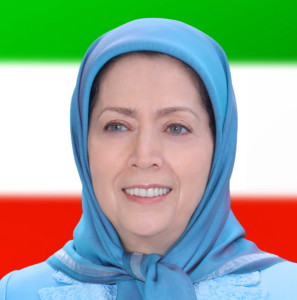The National Council of Resistance of Iran, the country’s present and future asset
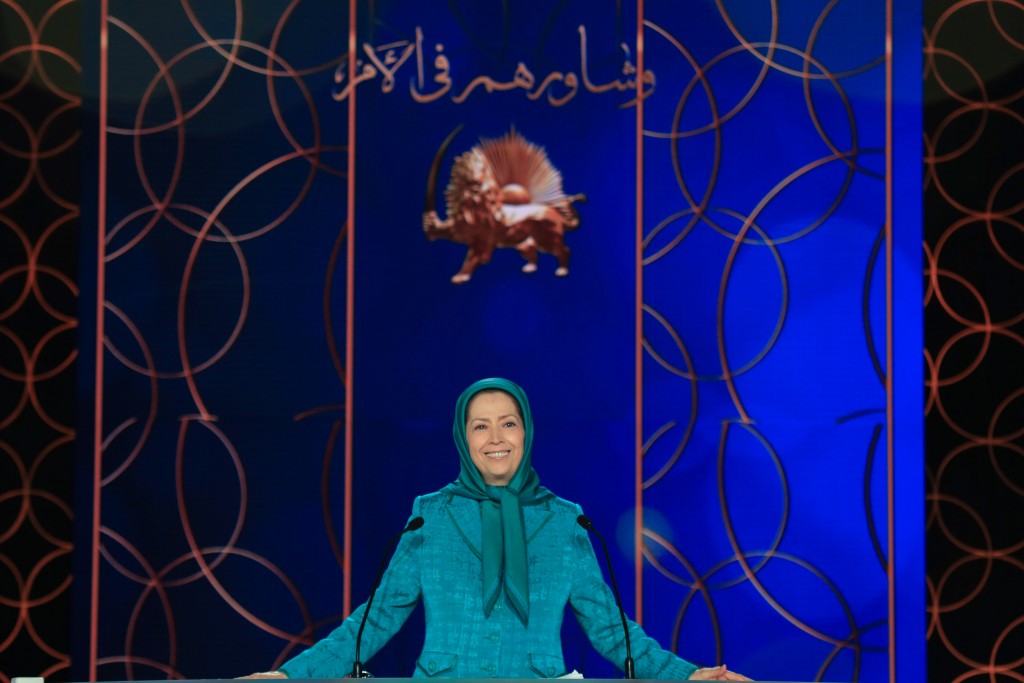
Speech on the 40th anniversary of the National Council of Resistance of Iran – July 18, 2021
We begin this session of the National Council of Resistance of Iran by sending our warmest salutations to the arisen Khuzestan and our Arab compatriots in that Province. The oil-rich Khuzestan lying next to Karoun and Karkheh rivers, is suffering and thirsting under the mullahs’ rule. But now, the people of Khuzestan have risen with cries of “we are thirsty.” The thirst for water and the thirst for freedom have overwhelmed the Province from Ahvaz to Mahshahr, Dasht-e Azadegan, Bostan, Shawar, Karkheh, Susangerd, Kut-e Abdullah, Hamidieh, and Shush.
Please allow me to name this NCRI session as the gathering of the arisen Khuzestan. Let us rise up and applaud for a minute to honor the memories of the innocent martyrs of this uprising and the sacrifices made by the suffering Khuzestan Province.
Greetings to the honorable members of the National Council of Resistance of Iran, and to the dear friends who are attending as observers. The NCRI turned 40.
It is starting its 41st year of existence, with perseverance, pride, dignity, and honor.
Congratulations and hail to each and every one of you.
Congratulations and hail to all freedom-loving Iranians, and all Iranians in Iran and around the world who defy the dictatorships of the Sheikh (mullahs) and the Shah.
We also salute and congratulate Massoud Rajavi, the founder of the National Council of Resistance of Iran.
The NCRI continued and evolved Mossadeq’s path
The Iranian Resistance has gained its pride and honor by paying the heaviest price in Iran’s contemporary history. In addition to the ceaseless daily executions and martyrdoms, there was a massacre in 1988, whose anniversary arrives in a week.
Incidentally, today is July 18, the anniversary of the ceasefire in the Iran-Iraq war imposed on Khomeini. The Iranian Resistance’s National Liberation Army imposed this ceasefire on Khomeini after 100 military operations with many sacrifices. Khomeini called this ceasefire, a “poison chalice.” The unpatriotic war, whose motto was “Liberating Quds (Jerusalem) via Karbala,” claimed the lives of one million and left two million wounded and maimed on the Iranian side, alone.
These days, Iranian people simply say: “Our enemy is right here, they lie when they say it’s America.” In those days, too, everyone knows that Khomeini falsely said that the enemy was Iraq. The Iranian Resistance was the sole party which dared to stand for peace and freedom and challenge Khomeini’s incredible demagoguery and destroying Iran’s youths, resources, and wealth in the inferno of war.
Founded on July 21, 1981, by Massoud Rajavi in Tehran, the NCRI is indeed the historical continuation and evolution of the path of Dr. Mohammad Mossadeq.
On the eve of the anniversary of the July 21, 1952 national uprising, the NCRI’s interim session pays tribute to the Great Mossadeq. We pay homage to the martyrs and all the compatriots who rose up on that day to support the leader of Iran’s national movement.
The NCRI is honored to have elevated the democratic legacies of the Constitutional Movement and the National Movement of Iran in four decades of relentless struggle against the backward religious fascism and put forth a progressive alternative, which represents the Iranian people’s desire for regime change and the establishment of a free Iran.
A democratically-elected republic based on universal suffrage and free elections, separation of religion and state, gender equality, and justice, which rejects all gender, ethnic, and religious discriminations, and defends the autonomy of oppressed ethnic groups within the framework of Iran’s unity and territorial integrity.
One of the Iranian people’s great achievements has been the relentless struggle of the NCRI and its Chairman to defend the freedom movement’s vital demarcations against the pillage and plunder of the mullahs’ vicious tyranny and its domestic and international factions and allies. After 40 years of ceaseless struggle, this alternative has developed into an asset for Iran’s present and future.
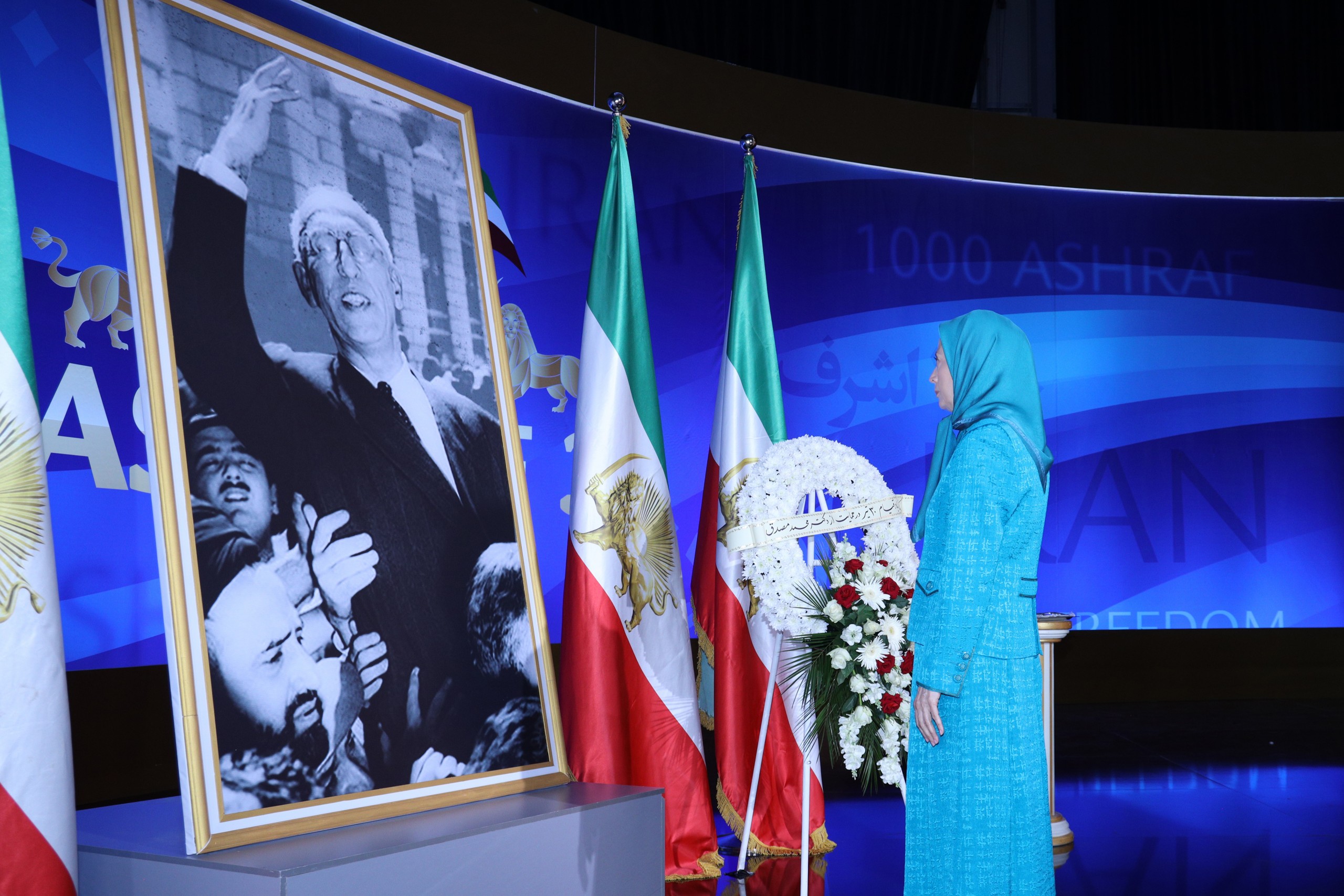
Contraction emanates from the regime’s nature
Dear friends,
Since the NCRI’s founding anniversary last year, we have witnessed significant developments. Among them, the election farce and the appointment of Ebrahim Raisi, the henchman of the 1988 massacre, to consolidate the religious fascism, have a special place.
A glance over the NCRI’s statements and resolutions and messages of the NCRI Chairman since 1981, clearly shows that the Council has a profound and realistic understanding of the backward nature of the ruling regime. It also shows that the regime has no options but to close ranks and crack down.
The NCRI was the first to use the term “contraction” to describe this path. It indeed refers to an important theory on the regime’s nature, strategy, and its inevitable policies.
According to this theory:
First, the absolute hegemony of the Vali-e Faqih (or supreme leader) is inviolable as far as the regime is concerned. The Constitution drafted by the Assembly of Experts in 1979 was revised, supplemented, and reinforced a decade later. Its essence is the principle of the velayat-e faqih, (absolute rule of the clergy), which Khomeini later elevated to the absolute rule of the faqih.
Two, to preserve its internal and external balance, the supreme leader needs to devour and purge its own components and factions. Creating a monolithic regime and shrinking its base of power are indispensable to the regime’s survival.
Three, the strategy of contracting the regime was implemented in step with several other fundamental policies, including: the persistent operation of control, suppression, and slaughter in the face of protests; the export of war, terrorism, and fundamentalism to regional countries coupled with efforts to dominate them; and finally, the plans to acquire a nuclear bomb and build up a missile arsenal.
Four, plundering the country’s wealth and revenues is indispensable to the strategy of contraction. The regime funds the projects to preserve its rule from the people’s pockets, and shirks the responsibility to invest in social welfare, health care, and education.
Five, despite its outward appearance, the policy of contraction does not reflect the regime’s power. On the contrary, it speaks to the regime’s fundamental weakness. When Khomeini insisted on continuing its criminal war with Iraq, or when Khamenei insists on pursuing the nuclear program and launching missiles in the region, their goal is to keep the society in check and push further away the danger of protests and resistance aimed at overthrowing the regime. This is the same goal that Khamenei is pursuing today by creating a unipolar regime.
Bogus reformers purged
The regime’s strategy of contraction is exactly synonymous with its inability to reform. This is the important truth that has been a persistent component of the NCRI’s positions in the past four decades, including at times when the euphoria over the so-called reformists dominated the political environment. Nevertheless, without any doubt, the NCRI kept saying that “the Velayat-e Faqih regime is incapable of any reform.” The NCRI Chairman kept repeating, “a viper does not give birth to a dove.”
The recent election sham was practically a political funeral for bogus reformers. The regime’s apologists and its agents posing as opponents were mournful, and the proponents of appeasement were dumbfounded.
The December 2017-January 2018 uprising put an end to the game of reformists and hardliners. Since then, the claimants of false reform have gone into coma. The society has become polarized with the Iranian people’s resistance standing up to the clerical regime, to the extent that it has left no more room for their parasitic life. The latest sham election was the fatal blow.
These professional traitors, however, will never stop defending the religious fascism in the face of the uprisings seeking to overthrow the regime.
The NCRI’s righteous positions
I want to conclude that owing to its commitment to the overthrow of religious fascism, the NCRI underlined the regime’s true nature and thus paved the way for the continuation of the resistance movement. This was while many forces, who pretended to be leftists, alongside the clerical regime and its Revolutionary Guard Corps (IRGC) pointed their finger to Iraq, the U.S. Imperialism, and the international Zionism, or looked for bogus reforms within the regime, instead of targeting the ruling reactionary regime.
It is also clear that the appeasement advocates can no longer justify their wheeling and dealings with the mullahs, claiming that there are moderates within the regime. Likewise, the clerical regime can no longer disguise its criminal officials and present them as reformists to its western counterparts.
Italy’s former Foreign Minister told the Iranian Resistance gathering this year: “During the years, myself as foreign minister or vice president of European Commission (…) had been having contact with representatives of the Iranian regime, sometimes the so-called reformists (…) They are very capable in trying to hide what they are doing.”
Another former Prime Minister of Italy also recalled the background of European efforts to moderate the regime: “A lot of you told me, it is impossible that you can arrive at this result. But we tried and we failed.”
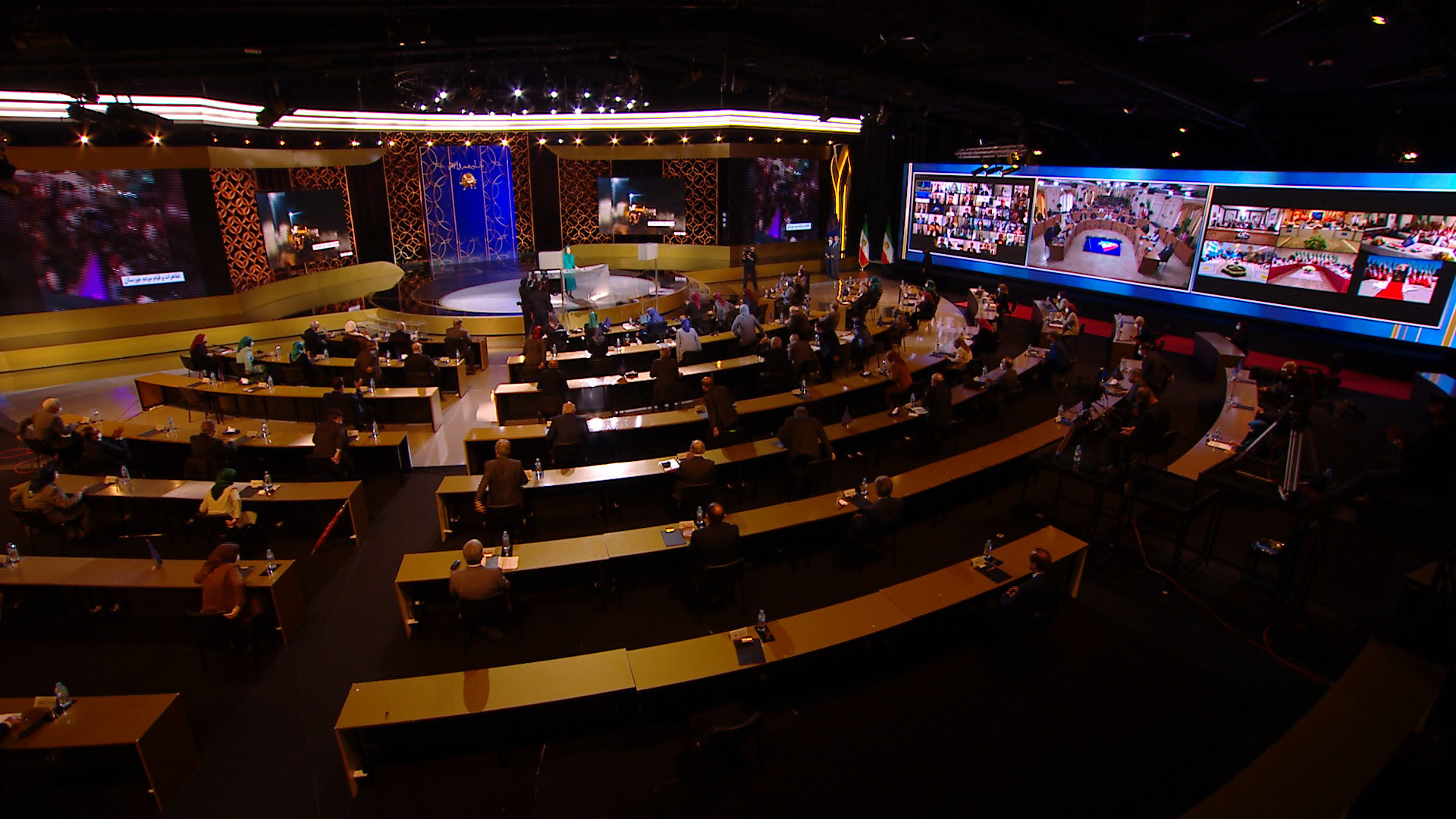
A monolithic regime signals Khamenei’s political demise
Dear friends,
The trend of events makes it palpably clear that the designation of a mass murderer as president emanates from the regime’s weakness and precarious state.
The plan of what Khamenei called “a young Hezbollahi government” was devised a few months after the January 2018 uprising at Khamenei’s headquarters. The December 2017-January 2018 uprising, the nationwide uprisings in July and August 2018, and other powerful uprisings in Kazerun, Khorramshahr, and Borazjan convinced Khamenei that it would be impossible to continue with the status quo. He concluded that he must form a new political configuration to confront the uprisings.
The first and most significant step in this path was the sham parliamentary elections in 2020 whereby Khamenei installed a collection of revolutionary guards and confidant thugs as parliament deputies. IRGC commander Mohammad Baqer Qalibaf, who boasts of being a club wielder, was picked to head the parliament. Such a combination has been unprecedented in the regime’s entire history as it pertains to their cohesion and unity of action.
Another step was the mass murder during the November 2019 uprising which revealed that Khamenei had found himself on brink. He temporarily forestalled the regime’s overthrow by resorting to carnage.
So, one can conclude that Khamenei was forced to create a monolithic regime because of his political demise when encircled by the protests and uprisings by an angry nation.
As a matter of fact, this development pushed the regime into a situation qualitatively different from any other time. The crux of the matter is that consolidating the regime was possible only by appointing a mass murderer who only intensifies the hostility of the Iranian people towards the regime.
Indeed, the conditions for overthrowing the regime are at hand. This is why Khamenei could not even tolerate one of his closest confidants, IRGC Brig. Gen. Ali Larijani. For 27 years, Larijani was the acting Chairman of the IRGC’s Joint Chief of Staff, the head of the state radio and television, the secretary for the Supreme National Security Council, and the Parliament Speaker.
As such, Khamenei will have no way out of the path he has taken. He is at an impasse with no room to maneuver. Such a path will never create new capabilities, potentials, and motives to resolve the countless problems plaguing the Iranian society.
As a result, we see that the regime’s negotiations with the U.S. to revive the JCPOA have not gone anywhere. The IRGC’s official publication wrote: “The JCPOA’s revival is less than nothing.” (1)
Secondly, considering that Khamenei has totally blocked the road to reforms which he views as being dangerous for his hegemony, any form of opening and improvement in economic and social affairs are also inconceivable.
These days we are seeing that the Coronavirus death toll has certainly exceeded 330,000. The reality is that the clerical regime has brought nothing but deaths, executions, massacres, and massive human casualties to erect a barrier against popular uprisings. It has also deliberately denied the people of Iran vaccines and frustrated everyone.
Today, unemployment, stagnant production, natural disasters, capital flight, negative economic growth rate, runaway inflation, devaluation of the national currency, and water and electricity crises have ravaged the country.
Poverty has become widespread; starvation has affected millions. Unemployment and loss of jobs have enraged the public. Daily bankruptcy of businesses has destroyed many families. Women and youth are perishing from repression and deprivation.
This is why there is no solution for the multitude of unanswered demands by the people and the outbreak of protests. So, the mullahs will ultimately face the uprisings.
Presently, the protests have already risen from under the ashes of the Coronavirus. From the uprising of the deprived people and fuel carriers of Saravan in Sistan and Baluchestan, to the uprising of the people of Yasuj, to the brave people of Aleshtar and Abdanan who clashed with Revolutionary Guards, to the repeated nationwide protests of the retirees, pensioners, and teachers, and the protests of farmers and livestock owners in Isfahan, Yazd, and Damghan.
Also, the nationwide strikes of contract workers of the oil, gas and petrochemical industries, power plants, and refineries, have continued for more than three weeks. And the protests of the heroic people of Khuzestan still persist despite the martyrs and daily arrests.
These are the footsteps of nationwide massive uprisings.
And thirdly, the taking office of a mass murderer is indicative of the regime’s precarious and fragile state where its measures to protect the regime provoke protests and upheavals in Iranian society every day.
The most important character of the present situation is that a sense of urgency dominates the regime. This is to say:
It has to be prepared every day and every hour to deal with the outbreak of protests and uprisings in this or that city;
It has to live every day and every hour with the nightmare of the ultimate rebellion of the army of the hungry;
It has to be ready every day and every hour to deal with the operations of the Resistance Units;
It has to await every day and every hour for the political and military repercussions of its missile attacks and warmongering in the region;
And it has to remain concerned every day and every hour about further disintegration of its repressive forces.
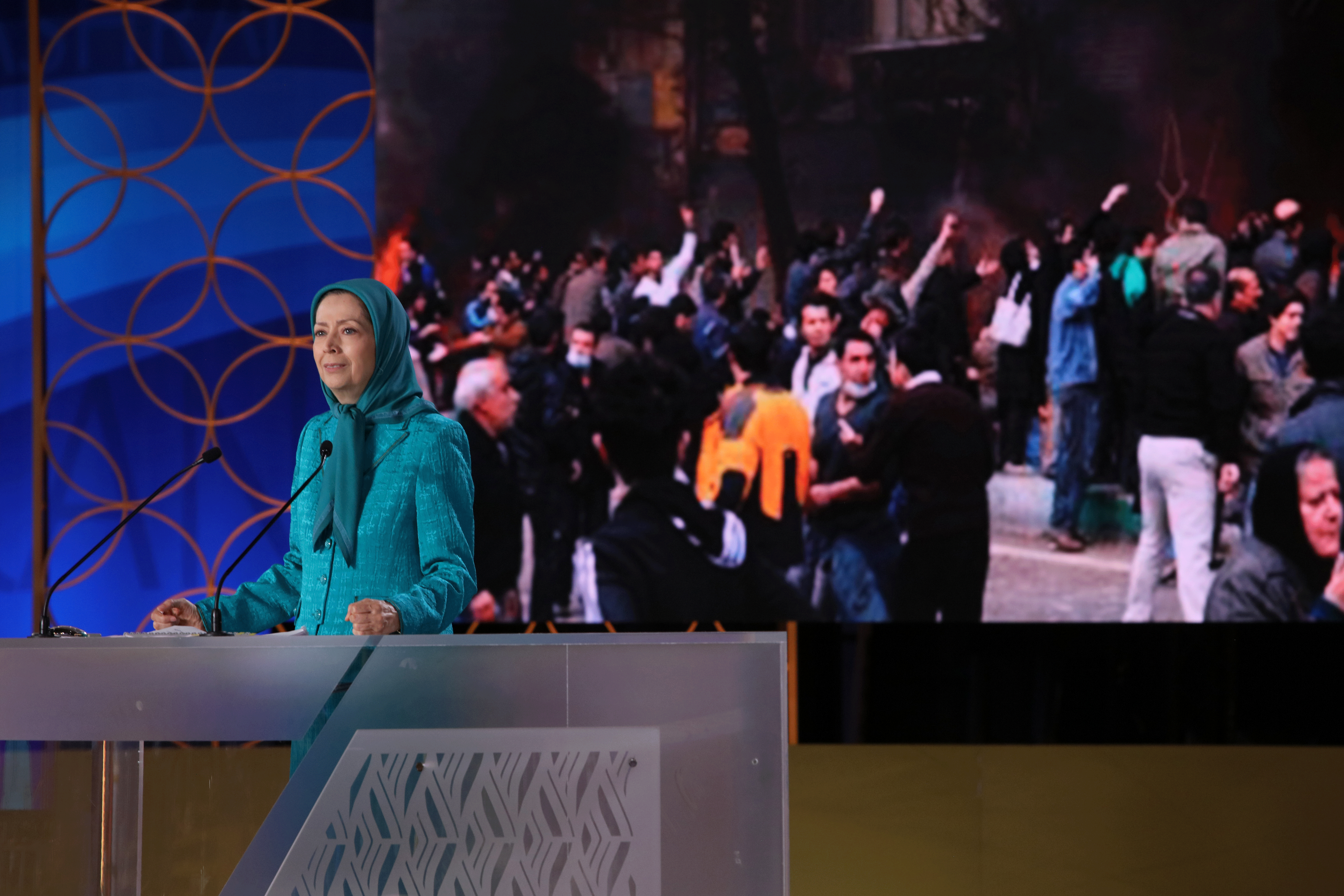
The democratic alternative and Resistance Units on their way to victory
Dear friends and compatriots,
In the lives of despotic and anti-popular regimes, including the religious fascism in Iran, there are occasions when the regime loses its dynamism and becomes stagnate. But such circumstances will serve as an opportunity for the Iranian people to free themselves only if there is a grassroots resistance movement which can turn such a possibility and potential into action on the ground. Otherwise that window would quickly close.
This is where the role of the democratic alternative and its march towards victory with the Resistance Units and the Army of Freedom comes into play.
Today, one can say with absolute certainty that the Iranian Resistance has succeeded in convincing the international community of the need to hold the clerical regime’s murderous president to account.
The hysteric reaction by regime officials, state media and its operatives and apologists as well as pro-regime media outlets reflect the fear of an uprising that would overthrow the regime, and of the march of a democratic alternative towards victory.
The people of Iran are determined to overcome the virus of religious fascism. This is the message of unrelenting uprisings.
We urge the international community, and specifically the U.S., Europe, and the United Nations, to declare Khomeini’s decree for the massacre of political prisoners in 1988 as genocide and crime against humanity.
We have called for Raisi’s prosecution and a ban on his attending international forums. We have urged and insisted on referring Iran’s human rights dossier, especially the 1988 massacre and the carnage in November 2019, to the UN Security Council.
The time has come for us to compel the regime to drink the poison chalice of human rights. With resistance and uprising, and with the great Army of Freedom, this mission can certainly be achieved.
Two days ago, July 16, was the anniversary of conquest of Tehran by the combatants of the Constitutional Revolution who had risen up against monarchy. In 1909, they rose from Rasht and Isfahan, and liberated Tehran from the occupation of the forces of despotism and the reign of the Shah and the Sheikh.
The day is not far when our beloved Tehran is once again liberated from the clutches of religious fascism and the mullahs’ occupation by the Army of freedom.
Hail to uprising and freedom
Hail to the people of Iran and the Resistance Units
Thank you and hail to all of you
- Tags: Human Rights, Iran, Iran protests, NCRI

